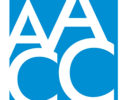Report roundup
By AACC 21st Century Center Staff
November 21, 2017
A monthly roundup of reports of interest to the community college sector.
Here are the reports you should know about this month.
- The “Open Doors 2017” report from the Institute of International Education (IIE) shows a nearly 10 percent drop in foreign students who attended U.S. community colleges in the 2016-17 academic year. The number of new international students enrolling in U.S. associate-degree granting institutions decreased from 29,328 in 2015-16 to 26,584 in 2016-17, according to the report. New students also represented a smaller portion of all international students attending public two-year colleges — about 28 percent in 2016-17, compared to 31 percent the previous year. Why is this significant? The presence of international students is an important way to internationalize U.S. campuses and local communities, according to the American Association of Community Colleges (AACC). And international students at community colleges help local economies.
- “Colleges and universities have a role to play in educating low-income students about how to pay for college,” say the authors of a Jack Kent Cooke Foundation brief. The brief offers 11 practices for institutions to help remove obstacles for low-income students. These strategies include clarifying financial aid letters and establishing clear policies regarding financial aid eligibility requirements, providing students with a true estimate of college costs (and non-tuition costs), prioritizing need-based institutional grants and setting up emergency aid funds.
- The Accelerated Study in Associate Programs (ASAP), developed at the City University of New York (CUNY), started as an experiment seven years ago. A new report by MDRC shows that the experiment is paying off. The program provides comprehensive student supports, including tuition waivers, free use of textbooks, access to advisors, and MetroCards to help offset the cost of transportation. To get these benefits, students must enroll full time and take developmental education classes early. An early study revealed that graduation rates for ASAP students were double those of non-ASAP students. In revisiting the program and students, MDRC’s researchers found that “ASAP both continues to increase graduation rates and enables some students to earn their degrees faster than they would have otherwise.”
Discuss these reports and more at LinkedIn.



